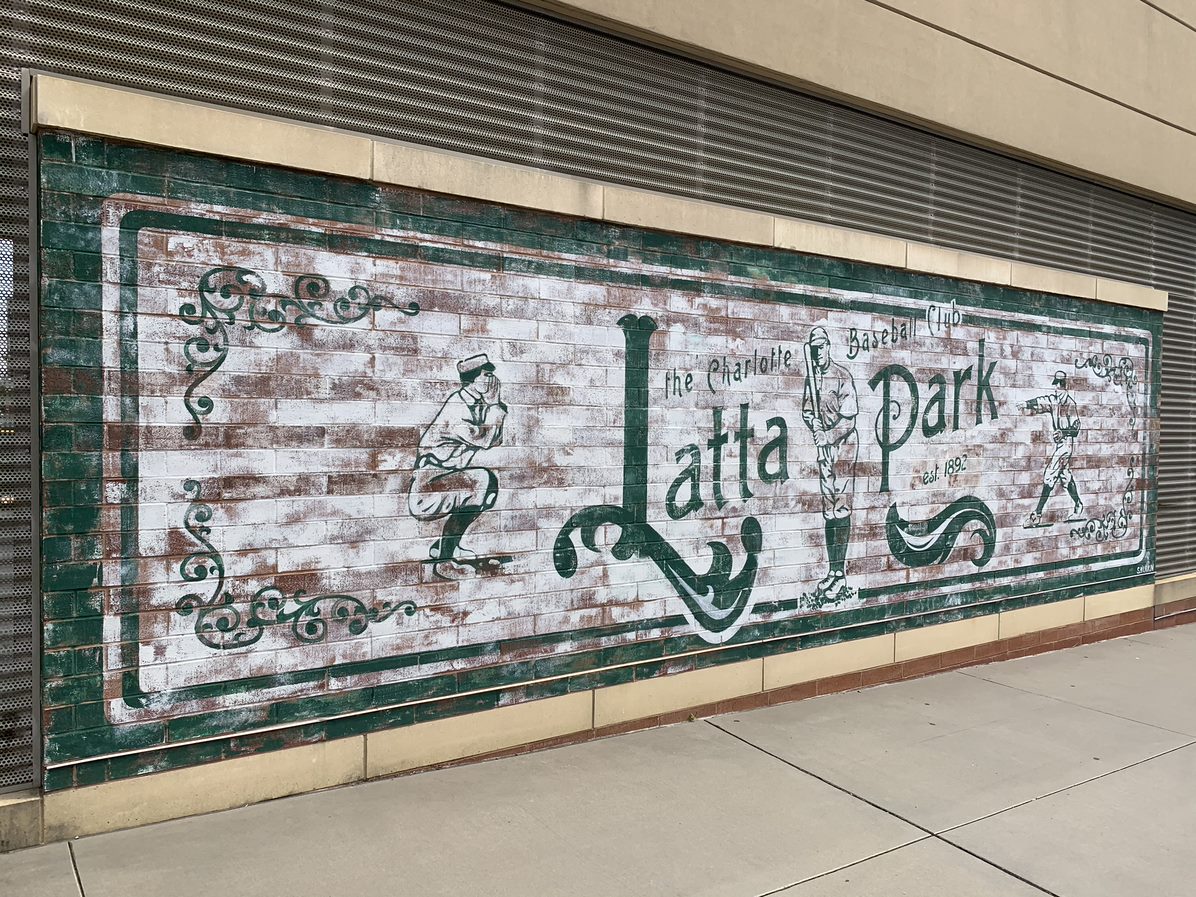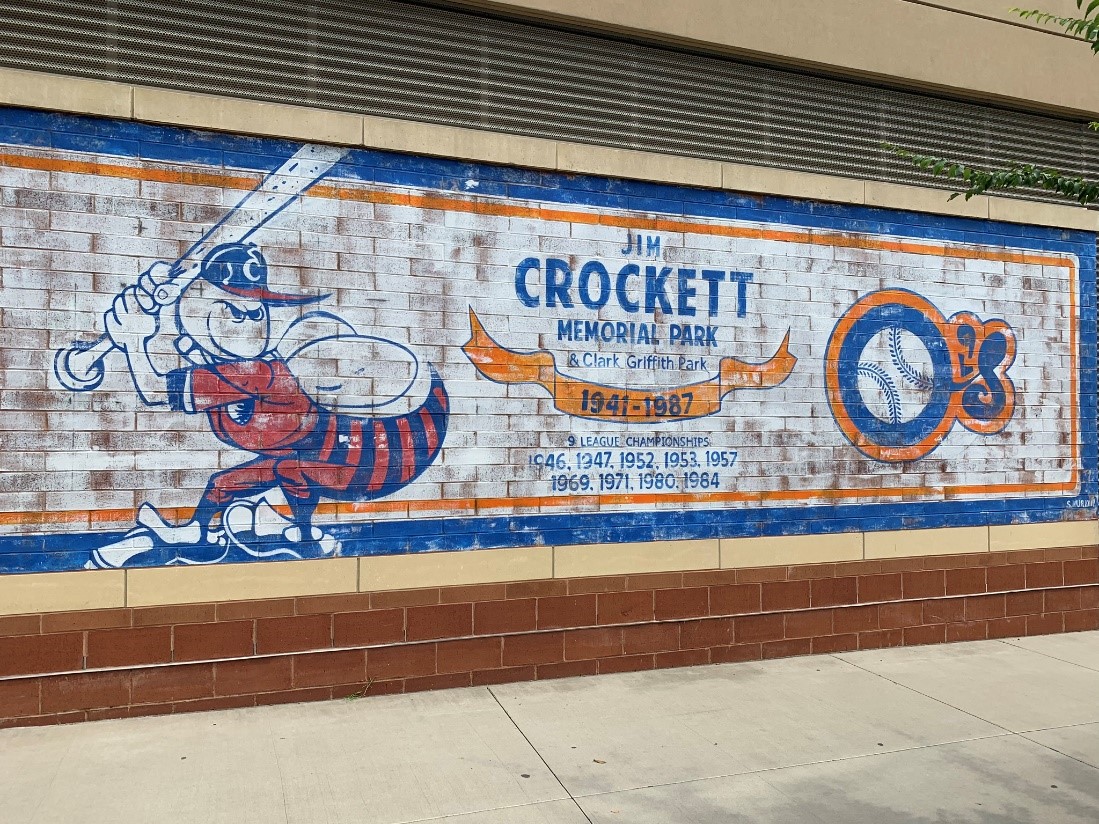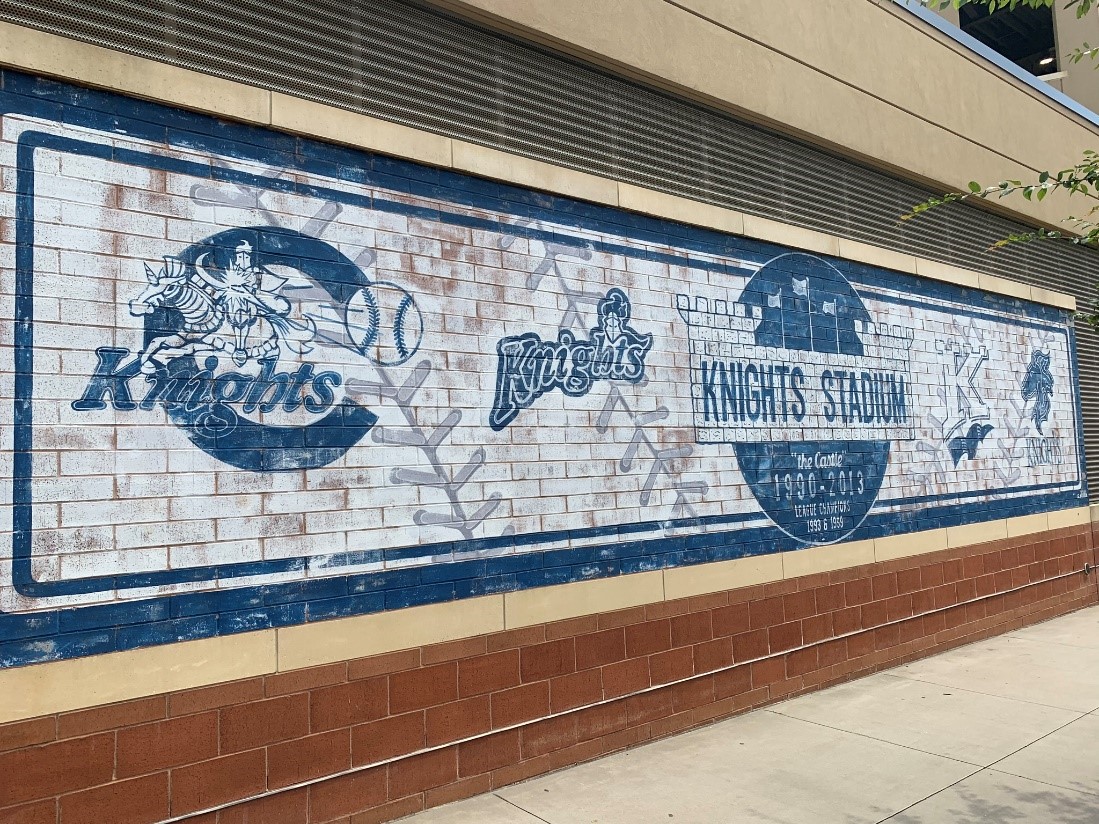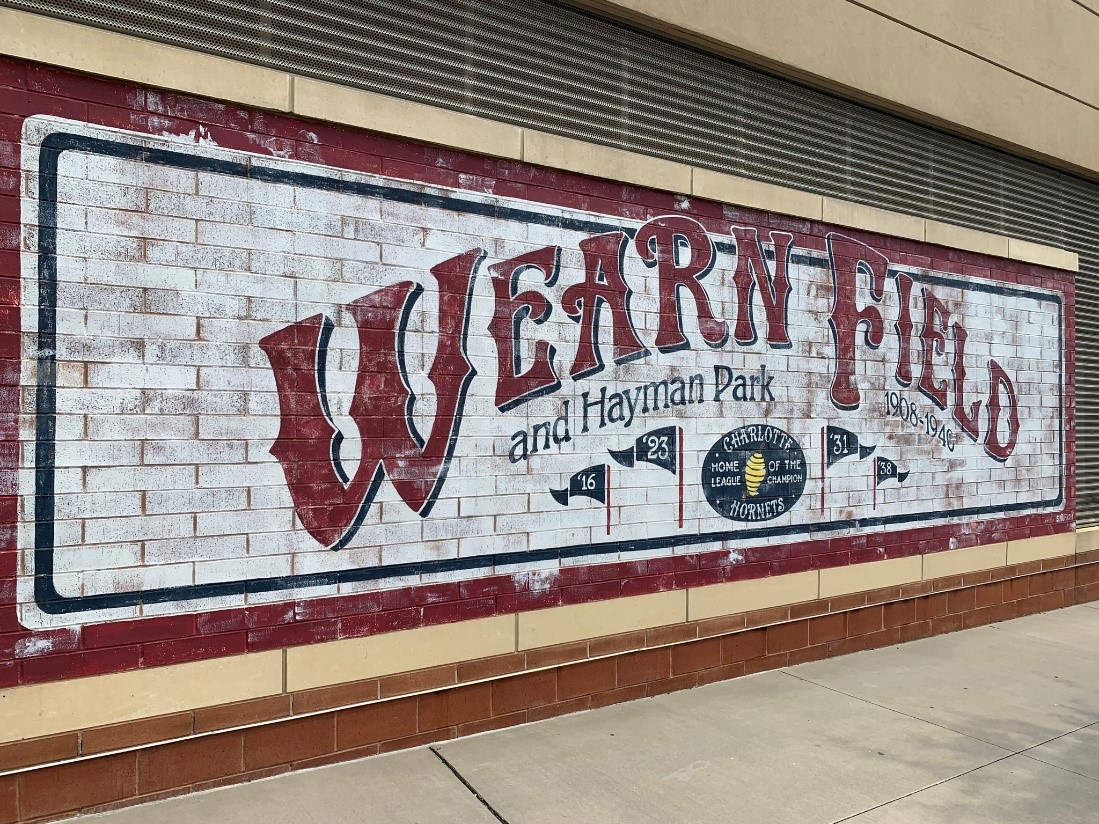Baseball History Comes Alive Now Ranked #2 by Feedspot Among All Internet Baseball History Websites and Blogs!
Guest Submissions from Our Readers Always Welcome!
Scroll Down to Read Today’s Essay
Subscribe to Baseball History Comes Alive for automatic updates. As a Free Bonus, you’ll get instant access to my Special Report: Gary’s Handy Dandy World Series Reference Guide!
Today we have something a bit different. Guest contributor Matt Kastel returns with an interesting account of Phillies’ Spring Training – 1919 style – at Charlotte’s Wearn Park. I’ve interspersed the essay with memorials to other historic Charlotte minor league ballparks. I think you’ll enjoy what Matt has to share with us. While you’re at it, here’s a link to Matt’s previous essay, an account of Black Sunday, Baseball’s Deadliest Day -GL
Wearn Field…and The Ghost of Phillies’ Spring Training Past!
What do Richmond, Virginia; Savannah, Georgia; Hot Springs, Arkansas; and Charlotte, North Carolina all have in common? If you knew that they were spring training sites for the Philadelphia Phillies, you probably need to get out more.
Charlotte was the official spring training site of the Phillies in 1899 and 1919. In the 21st century, it is hard to imagine Charlotte hosting spring training. After all, spring training is a big business where over 3 million tourists add $1.3 billion annually to the coffers of Arizona and Florida. But in 1919, Charlotte was a logical choice. It was a short train ride from Philadelphia, and North Carolina is a heck of a lot warmer than Philly in March.

Another selling point for Charlotte was Wearn Field. Seventy-two-year-old Phillies’ groundskeeper, Sam Payne, took one look at Wearn Field and proclaimed, “It was the best minor league field he was ever on.” He vowed within a week he would have the infield in major league condition.
Payne, a Civil-War veteran and eccentric, would man his post as the Phillies’ groundskeeper until he was 87. He was known for being stingy with baseballs and for turning sheep loose in the outfield to keep the grass short. Payne also collected black cats, much to the ire of the players. During a slump, players would catnap the bad-luck felines and then hold a kangaroo court. During the trial, the cats would be found guilty and sentenced to death. But like any good kangaroo court, it was done in jest, and Sam’s black cats would come out of the proceedings unscathed.
Later, in 1926 Wearn Field would host an exhibition game between the New York Yankees and the Brooklyn Dodgers. Before the game Babe Ruth, smoking a stogie, answered questions in his hotel from the press, naked under a sheet where he boasted, southern women to be, “all they were cracked up to be.” Ruth being Ruth, homered during the game. In 1933, Wearn Field would also host Charlotte’s first integrated baseball game, when a local mill team made up of white players took on the North Charlotte Black Yankees. Newspaper accounts differ on who won the game.

Getting to Charlotte in 1919 was a challenge for at least one of the Phillies players. George “Mule” Watson, a 23-year-old right-handed pitcher, vanished during the trip. He got himself to the train station in Philadelphia in good shape, and as he and his teammates were waiting for the train, he announced he was going to look for a match. He was not heard from for four days. When he did arrive, he offered no excuse or explanation for his whereabouts.
That spring, Jake Munch, who had played with Watson the prior season with the cross-town rival Philadelphia A’s, were both trying to catch on with the Phillies. Knowing Mule’s fear of mice, Munch captured one and chased Mule up and down Charlotte’s main thoroughfares with it. People watching the action assumed they were witnessing a robbery in progress.
The big news for the Phillies was the holdout of star shortstop and future Hall of Famer, Dave Bancroft. Bancroft initially refused to report to Charlotte. Bancroft’s issue was that the team was lousy, and he wanted to be traded to a contender. Bancroft eventually got his wish. The following season he was traded to the New York Giants, where he proceeded to play in the next three World Series.
When the games began, over 2,000 fans poured into Wearn Field to watch the Phillies humiliate nearby Davidson College, 11-0. Things got so bad for Davidson that bleacher bums suggested that the RAH RAH players (Davidson) would have a better chance of catching the ball if they exchanged their gloves for rather large baskets. A good crowd followed the Phillies to Belmont College where the Phils whipped Belmont, 8-1. The Phillies also played a pair of free intrasquad games (Yannigans vs. Regulars).

The must-see game that spring was when Walter Johnson, statistically the best pitcher in baseball history, led the Washington Senators into town for a weekend series. On the day Johnson pitched, over 3,000 people packed Wearn Field, all paying two bits and a half, plus the war tax.
The action wasn’t just on the field. Several hundred people showed up to hear Phillies’ Manager, Jack Coombs, speak at a YMCA meeting, where he lectured on life in the big leagues and how amateur baseball is the “backbone of the national pastime.” The Charlotte Observer described the evening as being “one of the most interesting events of its kind ever held in Charlotte.” They also noted that there was more discussion of baseball than the upcoming city elections and the WWI peace conference in Paris.
A stir was created by the Philadelphia Inquirer’s sports writer, Jim Nasium (obvious pseudonym), whose daily column contained many “knocks” on Charlotte. He crossed the line when he criticized Wearn Field’s locker room. This inspired the Charlotte Observer’s sports editor, K.B. Crandall, to note that Philadelphia was in no shape to criticize anyone, because, “your own ballpark in ‘dear Philly’ is the poorest specimen now on exhibition in the majors.” He had a point. Throughout early Phillies history, the team was beset by stadium issues, including fires and Black Saturday where 12 people died and over 200 were injured during a doubleheader due to a structural failure.
Spring Training is a time of optimism. With opening day comes reality. The Phillies were a non-competitive 47-90 in 1919, and Manager Jack Coombs was fired midseason.
Someday Charlotte will get a Major League team of their own. When they do, if you look closely, you might just see the ghosts of the 1919 Phillies lurking in the shadows.
Matt Kastel
(Matthew Kastel is the Past President of the Stadium Manager Association and is a stadium manager. In addition, he teaches a stadium and events course at Mt. St. Mary’s University and is co-author of a textbook: Managing Sport Facilities, 4th Edition)
Sources: Ballpark Digest, Fox Business, UNC University Libraries, Charlotte Observer
Subscribe to our website, “Baseball History Comes Alive!” with over 1200 fully categorized baseball essays and photo galleries, now closing in on the one million hits mark with 935K hits and over 800 subscribers: https://wp.me/P7a04E-2he


Very interesting article by Mr. Kastel. Thnx for sharing it, Gary. It’s sure different now-a-days; how the venues and MLB affiliations of the various Minor Leagues have consolidated, when compared to the days when there were leagues that went all the way down to Class “D” divisions. And Minor League venues were more spread out around the country then. A couple ballparks that I used to attend; that are no longer MLB Spring Training sites, are Palm Springs, CA {Angels} and Yuma, AZ {Padres}. To keep the Grapefruit League and Cactus League centrally located in FL and AZ, respectively, does make sense, I guess {less time spent traveling from site to site means more time for development and training}. Keep up the good work, BHCA contributors. Thnx.
Thanks Tom…all good points!
Wonderful trip down memory lane! I played semi-pro baseball in the 1960’s against many older guys who had once played in the minor or major leagues (Jim Duffalo). But by the 1960’s minor league baseball had contracted and none of my age group (in the Wilds of Pennsylvania) were ever signed; tryouts yes, signings, no. I loved listening to the great stories of these older guys who played in places like Bradford, PA, Hornell, NY, Olean, NY, Wellsville, NY, etc. It seemed if you wanted to try professional baseball they gave you a shot. Things sure have changed. I see so many vacant fields being unused by the youth of today; I wonder how many DiMaggio’s are undiscovered nowadays because they never grew up playing the game.
Thanks Kevein…great points and great insight to the game!
Interesting article. I live not to far from where Wearn Field once was, jog by the location occasionally and always think about that Park that is now long gone. Today you would never know it was there, demolished long ago and the land it was once on has had several lives since then including a parking lot and industrial building as it sits near a major rail line. It’s not to far from where Bank of America Stadium is now located and where the Carolina Panthers play. It’s more or less a flat block of land though, and you can still imagine that a Baseball Park was there if you know. Wearn Field was named after a very successful businessman at the time, and although the park is long gone, the main part of the industrial building that he used for his lumber business is still there just as it was way back then and is located right across the street from where the park once was.
Thanks JD, that’s great information!